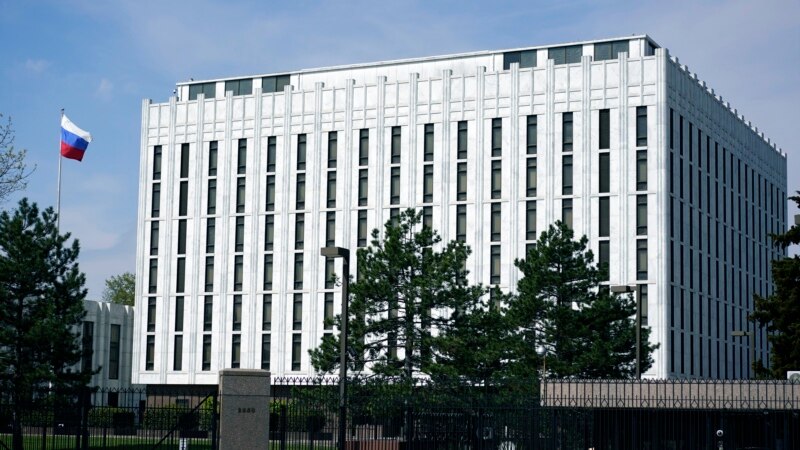As the immigration crisis continues and the Biden administration pursues a muscular enforcement strategy with an eye to public opinion and the 2024 presidential election, the Department of Homeland Security prospers. One obscure $6 billion program has grown silently: a network of over 1,000 surveillance towers built along America’s land borders, a system that it describes as “a unified vision of unauthorized movement.”
A broad outline of the Biden administration’s plan to solve the immigration crisis in America was unveiled this week, including 5,800 new border and immigration security officers, a new $4.7 billion Southwest Border Contingency Fund, and more emergency authority for the president to shut down the border when needed. Moving forward on these programs will “save lives and bring order to the border,” President Joe Biden said in his State of the Union address last week.
Homeland Security’s Fiscal Year 2025 budget request, released yesterday, includes $25.9 billion to “secure the border,” mostly through more government agents and more (and more capable) technology. Hidden in the fine print is the $6 billion tower surveillance program, one that has been in the works and growing since 2005 for years.
The system is called Integrated Surveillance Towers, and it is projected to reach “full operational capability” in 2034, a network of over 1,000 manned and unmanned towers covering the thousands of miles that make up America’s northern and southern borders. IST includes four ever-growing programs: Autonomous Surveillance Towers (AST); Integrated Fixed Towers (IFT); Remote Video Surveillance System Upgrade (RVSS-U); and the Northern Border RVSS (NB-RVSS). The deployment of various towers have been going on so long, some are already obsolete, according to the DHS 2025 budget request.
According to the Department of Homeland Security, IST detects and identifies “threats in near real time,” plugging up one gap that allows for “the exploitation of data collected by sensors, towers, drones, assets, agents, facilities, and other sources informing mission critical decisions in the field and at Headquarters.” Modern technology, including AI and “autonomous capabilities,” the Border Patrol says, is key to “keeping front-line personnel safer, more effective, and one step ahead” of border enemies.
Towers are currently being built and netted together by Elbit America (part of Israel’s Elbit Systems), Advanced Technology Systems Company, and General Dynamics. Defense Daily reported in September that DHS plans to acquire about 277 new IST towers and upgrade about 191 legacy surveillance towers in the latest set of contracts. A January press release from General Dynamics celebrates the distinction of being named one of the three recipients of a piece of a $1.8 billion indefinite delivery/indefinite quantity contract: “The Consolidated Tower & Surveillance Equipment (CTSE) system consists of all fixed and relocatable sensor towers, and communications and power equipment necessary for CBP [Customs and Border Protection] to perform surveillance along the southern and northern borders of the United States.” The company says it may take up to 14 years to complete.
The network of towers hosts various day and night capable cameras and radars, and can also be equipped with other sensors, including cellphone communications intercept devices, to paint a picture of hostile terrain below. The main focus of DHS today is to net all of the towers into “a single unified program” and integrate AI into the ability to detect movement and activity to create a “common operating picture.”
Though billions have been spent on the IST program, government auditors have consistently questioned whether it actually reduces unlawful border crossings. A General Accountability Office assessment from 2018 concluded that the DHS was “not yet positioned to fully quantify the impact these technologies have on its mission,” that is, whether the towers actually help to stem the flow. The GAO then recommended that DHS establish better metrics to “more fully assess … progress in implementing the Southwest Border Technology Plan and determine when mission benefits have been realized.”
A new GAO report issued last month updates progress on the IST program and says that finishing the network in Texas has been a problem. “According to the IST program manager,” the report reads, “… ease of access and willingness of property owners are key factors when considering sites for tower placement. The program manager stated that sites in the Laredo and Rio Grande Valley sectors … are still challenging because these areas need permissions from multiple landowners and road access may be an impediment.”
Though the vast majority of undocumented immigrants cross the southern border at just a handful of locations, homeland security equally seeks to cover the entire Canadian border with towers, according to DHS documents. And not only that: Homeland security is eyeing the California coast and the coastal Atlantic for future expansion, portending a ubiquitous nationwide system of ground surveillance.
ResearchAndMarkets.com’s November report on “Border Security Technologies”says that the market will exceed $70 billion globally in 2027, rising from $48 billion in 2022. “The adoption of AI-integrated surveillance towers will be critical to driving growth, with the total value of camera systems globally expected to reach $22.8 billion by 2027; up from $10.1 billion in 2022. Surveillance towers are capable of creating a virtual border, detecting, identifying, and tracking threats over great distances.”
“AI-integrated surveillance towers are at the centre of growing concern by campaign groups regarding their potential to analyse the behaviour of the general population, possibly infringing upon people’s human rights. These concerns may slow adoption unless addressed,” the report says.
The post U.S. Government Seeks “Unified Vision of Unauthorized Movement” appeared first on The Intercept.

 8 months ago
85
8 months ago
85

